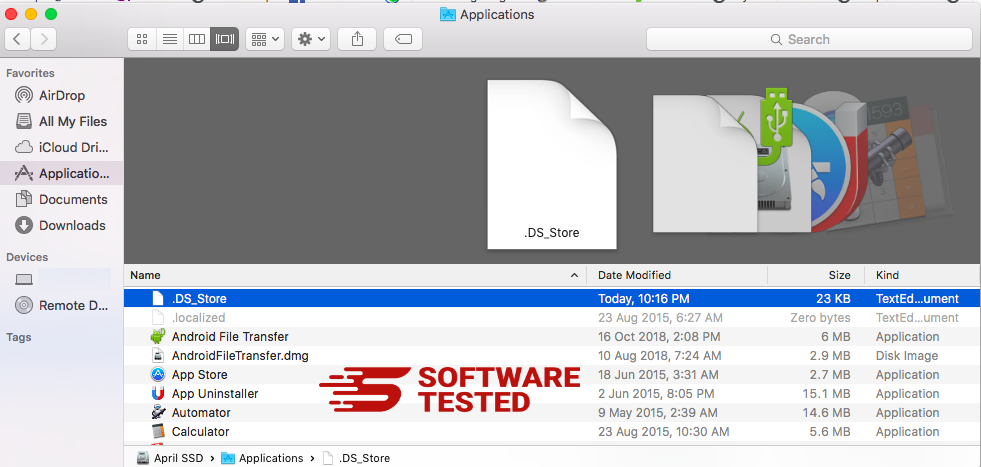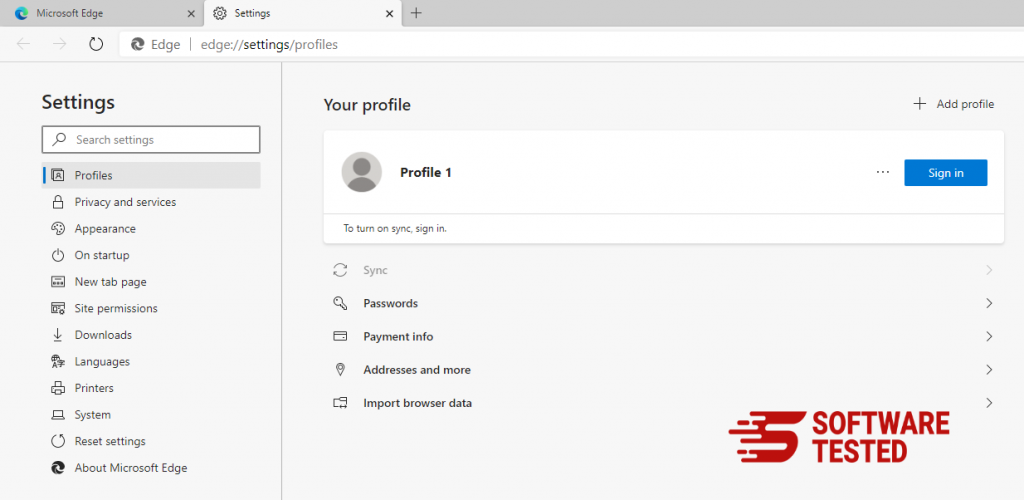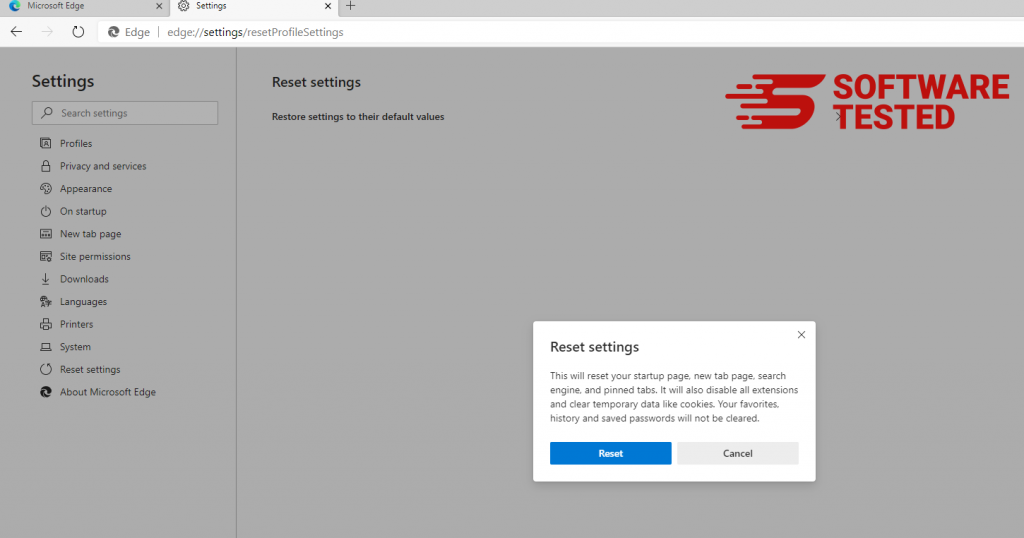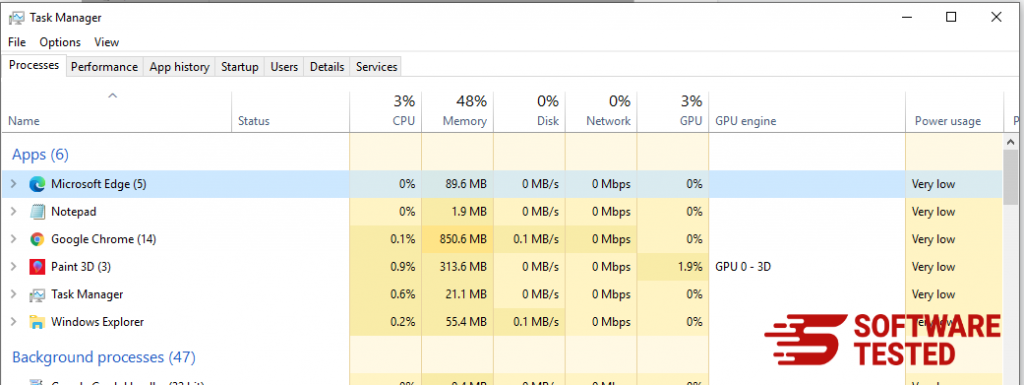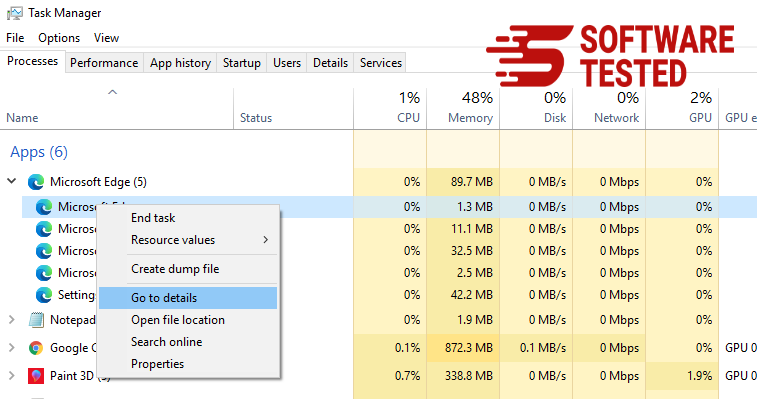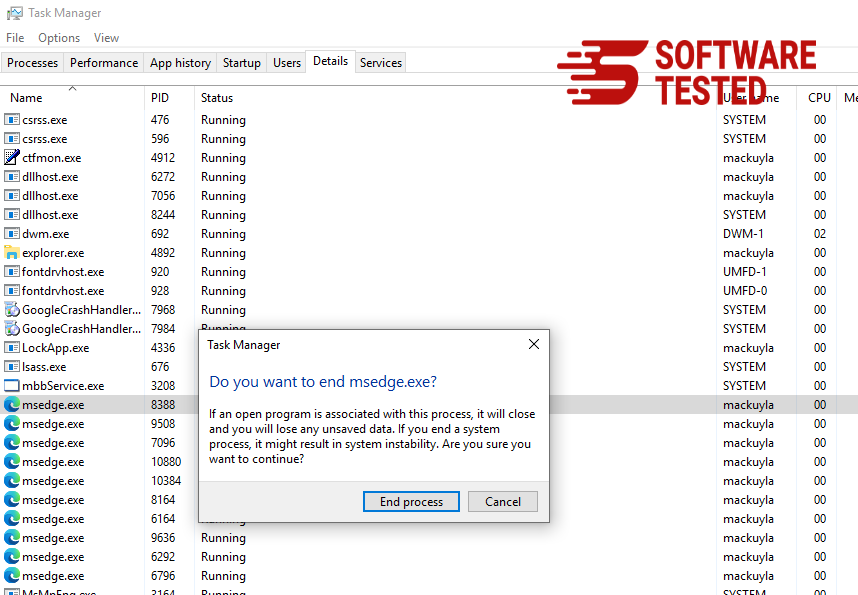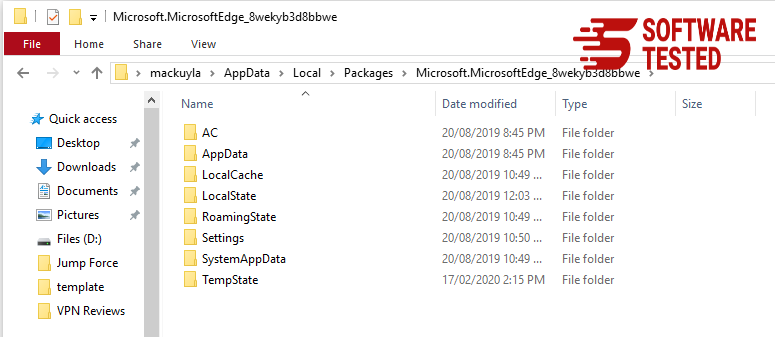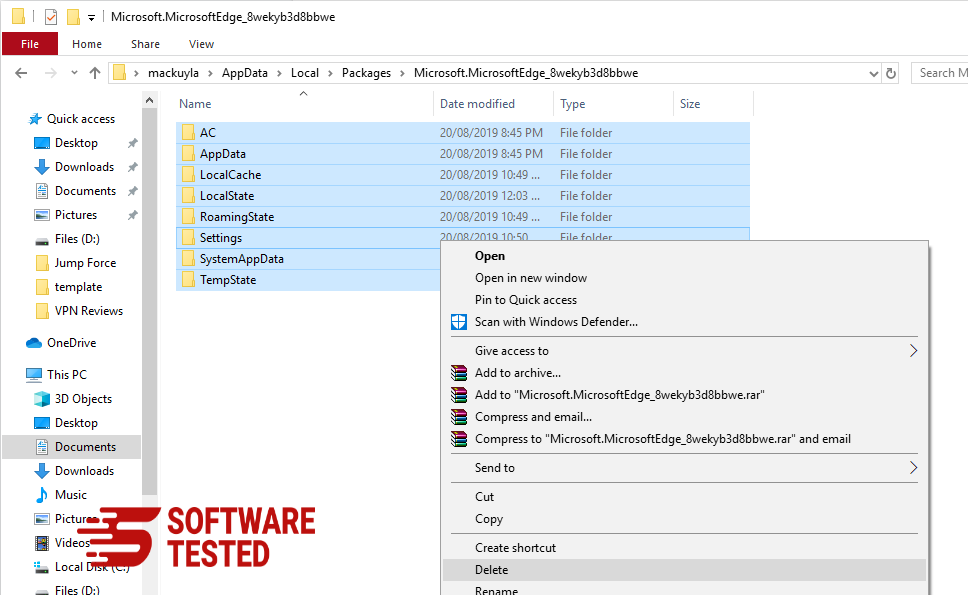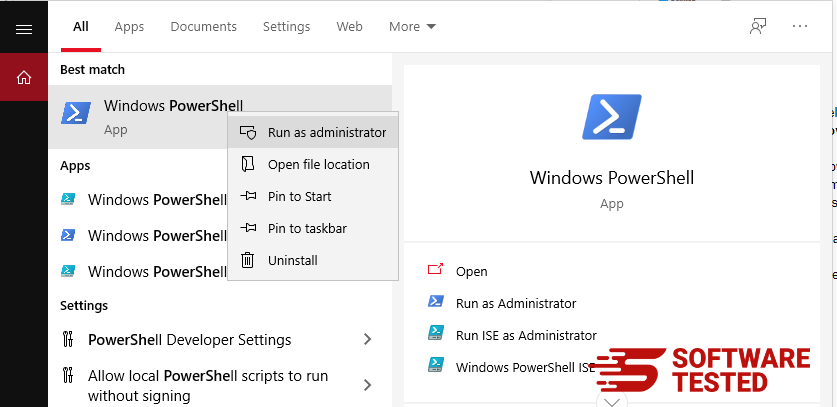What is Conhost.exe?
Chances are, you landed on this article because of an encounter with the Console Window Host process in your system’s Task Manager. You are probably wondering what the process is and whether or not keeping it in your system is a safe option. The good news is that we have the perfect answer for you.
Conhost.exe is an executable file related to the Console Window Host process. To better understand the nature of this process, it’s best to go back a few years to its origin. During the days of Win XP, ClientServer Runtime System Service (CSRSS) was the handler of Command Prompt. Since this handler was a system-level service, it provided a lot of instability in computers. CSRSS could depose the whole system with a crash. This caused security vulnerabilities as well as reliability problems. Also, the process couldn’t be themed. This meant the theme code could not run as a system process. Therefore, the Command Prompt always displayed the classic interface.
Fast forward to Windows 7, Console Window Host process was introduced. The process acts as a bridge between CSRSS and Command Prompt (cmd.exe). It permits Windows to address prior issues such as interface elements like scrollbars. Now, users can drag and drop in the cmd.exe. This style has remained the same, with Windows 8 and 10 adopting it.
Despite Conhost.exe presented as a separate entity in the Task Manager, it remains closely related to CSRSS. To confirm this, you can check the process using Process Explorer and you will realize that it operates under csrss.exe.
Expert Tip: For smoother PC performance, consider using a PC optimization tool. It handles junk files, incorrect settings, and harmful apps. Make sure it's right for your system, and always check the EULA and Privacy Policy.
Special offer. About Outbyte, uninstall instructions, EULA, Privacy Policy.
In a nutshell, Conhost.exe presents a shell which holds the ability to operate a system-level service such as CSRSS, simultaneously providing a reliable ability to combine modern interface components.
Is Conhost.exe a Legitimate File?
The concerns of this file being legitimate can be brought forth by some questionable behaviors. For instance, while checking your Task Manager process list, you may come across multiple Console Windows Host running simultaneously. However, this may be due to several Command Prompt instances being opened with each running its Console Window Host process. Moreover, several apps use the same command line. Therefore, each will spawn its Console Window Host process.
Most of the programs that run on the background function in this manner. Thus, it is quite normal to have multiple processes of the same command line running. However, each process should take little memory usage (under 10 MB) and close to 0 CPU percentage usage.
If, in any case, you identify out-of-line CPU usage in one of the processes, there is a chance that you are dealing with a corrupt system app or a virus. You must immediately check the related apps to get the hint of where you can begin your troubleshooting. Although Task Manager does not provide in-depth information about related apps, there is the Process Explorer which can be downloaded here and launched as a portable app with no installation needed. This program delivers all sorts of advanced tools that can help you trace the source of the problem.
To begin tracing the process, press Ctrl + F simultaneously, then search for conhost. Browse through the results to identify apps associated with Console Window Host. Pay attention to the CPU usage, so you can identify the app that has problems.
Is Conhost.exe a Virus?
Conhost.exe process is a legitimate Windows component. However, in some instances, a virus can clone its nature and title to hide within your system. Therefore, if your system is misbehaving and you suspect the Console Window Host is the culprit, it is best to check the process’s file location. You can do so by right-clicking on the process in Task Manager, then select Open File Location. If the file is under windows\system32, you can rest assured that you’re not dealing with a virus.
The famous virus related to this process is called Conhost Miner. It is a Trojan that operates as the Console Window Host process. When you come across it in the Task Manager, it looks like the legitimate Conhost.exe process. But if you dig further on its location roots, you will discover that it is not located in the windows\system32 but under %userprofile%\AppData\Roaming\Microsoft. This Trojan is used to hijack your entire PC and use its graphic and CPU power to mine Bitcoin. The main symptoms of this Trojan are high usage of memory and CPU, with CPU usage reaching up to 80% for lengthy periods. Apart from causing system glitches, making it difficult to run other apps, high CPU power usage for lengthy periods can cause harm to other computer components.
Of course, a trusted anti-malware tool can help prevent or get rid of the existing Trojan and other sorts of viruses in your computer. You may also want to use a reliable PC Repair tool to maintain a clean, and healthy system.
How to Remove Conhost.exe?
If you are dealing with the virus version of Conhost.exe, you will need to execute a thorough removal process. Dealing with a virus which has managed to find its way to the roots of your system requires one to be delicate. Any mistake may lead to permanent system damage or future return of the virus to your system. For this reason, our experts have prepared a simple, yet effective guide to follow to get rid of the Conhost.exe virus. Follow these steps in chronological order for effective process. To remove Conhost.exe, here is what you need to do:
To delete Conhost.exe from your device, follow the steps below:
Step 1. Remove Conhost.exe from Windows
Step 2. Delete Conhost.exe from Mac OS X
Step 3. Get rid of Conhost.exe from Internet Explorer
Step 4. Uninstall Conhost.exe from Microsoft Edge
Step 5. Delete Conhost.exe from Mozilla Firefox
Step 6. Remove Conhost.exe from Google Chrome
Step 7. Get rid of Conhost.exe from Safari
How to Remove Conhost.exe from Windows
One of the common traits of Conhost.exe is that they like to pose as legitimate programs or can be bundled with legitimate programs in order to infect your computer. The first thing you need to do when faced with the risk of a Conhost.exe is to uninstall the program that came with it.
To remove potentially malicious and unwanted programs from Windows and get rid of the Conhost.exe permanently, follow these instructions:
1. Uninstall malicious programs.
Click on Start, then type in Control Panel in the search box. Click Control Panel from the search results, then click on the Uninstall a program link under Program. The Control Panel looks the same for Windows 7 computers, but for Windows XP users, click on Add/Remove Programs instead.
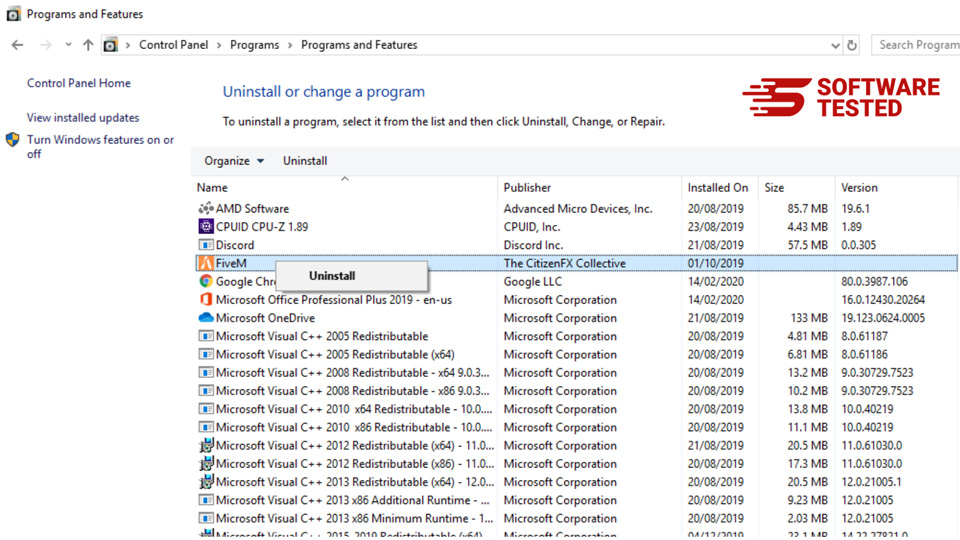
For Windows 10/11 users, you can also uninstall programs by navigating to Start > Settings > Apps > Apps & features.
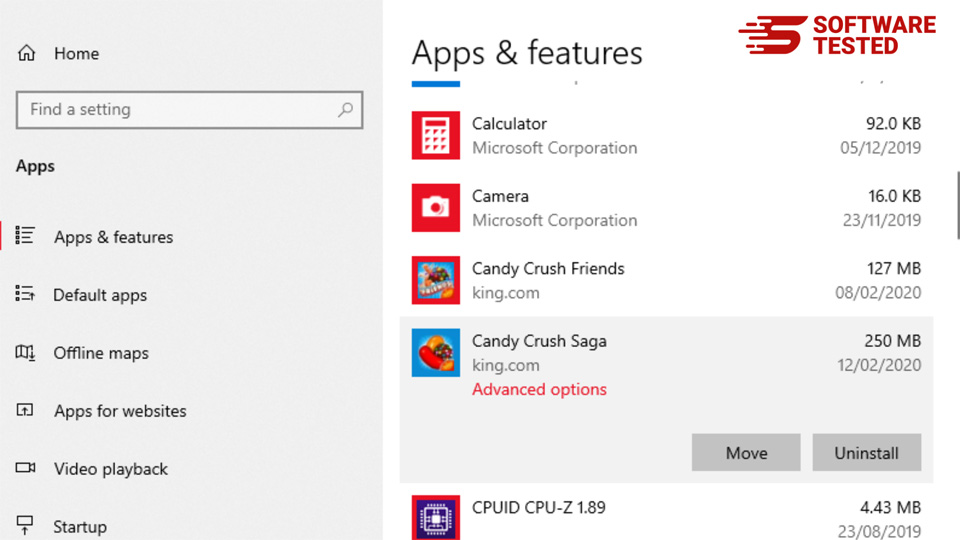
In the list of programs on your computer, look for recently installed or suspicious programs that you suspect to be malware.
Uninstall them by clicking (or right-clicking if you’re in the Control Panel), then choose Uninstall. Click Uninstall once again to confirm the action. Wait for the uninstallation process to be completed.
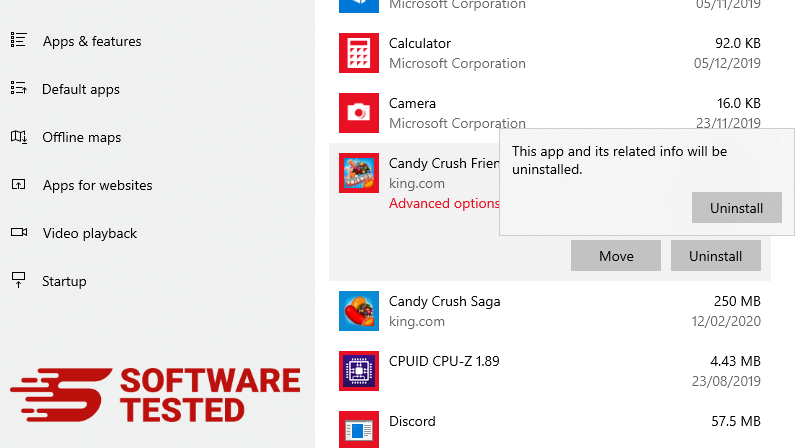
3. Remove Conhost.exe from Windows shortcuts.
To do this, right-click on the shortcut of the program you uninstalled, then select Properties.

It should automatically open the Shortcut tab. Look at the Target field and delete the target URL that is related to the malware. This URL points to the installation folder of the malicious program you uninstalled.
4. Repeat all the steps listed above for all the program’s shortcuts.
Check all locations where these shortcuts might be saved, including the Desktop, Start Menu, and the Taskbar.
5. Empty the Recycle Bin.
Once you have deleted all the unwanted programs and files from Windows, clean up your Recycle Bin to completely get rid of the Conhost.exe. Right-click on the Recycle Bin on your Desktop, then choose Empty Recycle Bin. Click OK to confirm.
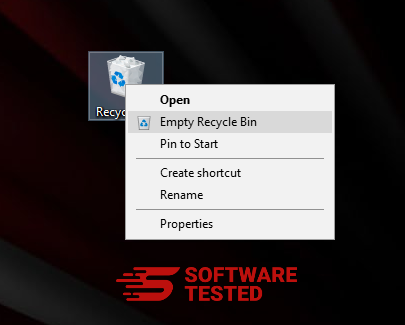
How to Delete Conhost.exe from macOS
macOS is more secure than Windows, but it is not impossible for malware to be present on Macs. Just like other operating systems, macOS is also vulnerable to malicious software. In fact, there have been several previous malware attacks targeting Mac users.
Deleting Conhost.exe from a Mac is a lot easier than other OS. Here’s the complete guide:
- If you suspect a recently installed software to be malicious, uninstall it immediately from your Mac. On Finder, click the Go > Applications. You should see a list of all the apps currently installed on your Mac.

- Find the app associated with Conhost.exe or other suspicious apps you want to delete. Right-click on the app, then choose Move to Trash.

To completely get rid of Conhost.exe, empty your Trash.
How to Get Rid of Conhost.exe from Internet Explorer
To ensure that the malware that hacked your browser is completely gone and that all unauthorized changes are reversed on Internet Explorer, follow the steps provided below:
1. Get rid of dangerous add-ons.
When malware hijacks your browser, one of the obvious signs is when you see add-ons or toolbars that suddenly appear on Internet Explorer without your knowledge. To uninstall these add-ons, launch Internet Explorer, click on the gear icon at the top-right corner of the browser to open the menu, then choose Manage Add-ons.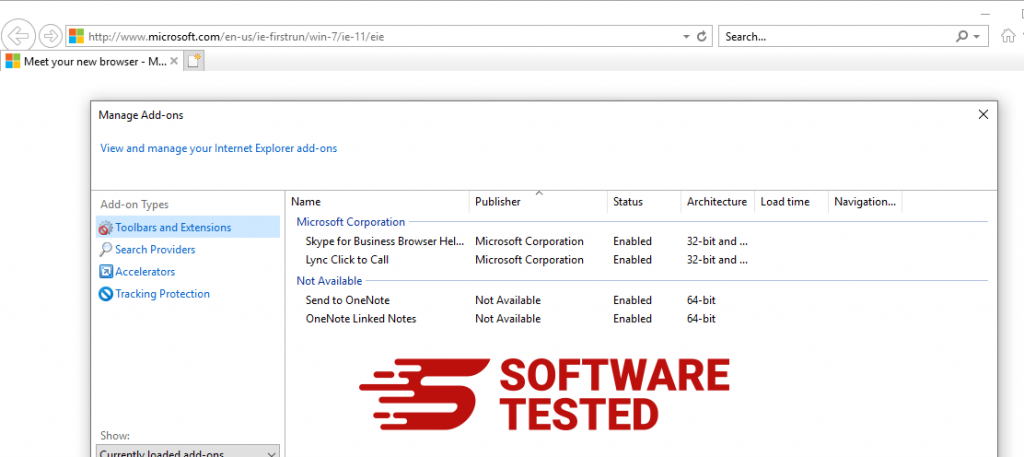
When you see the Manage Add-ons window, look for (name of malware) and other suspicious plugins/add-ons. You can disable these plugins/add-ons by clicking Disable.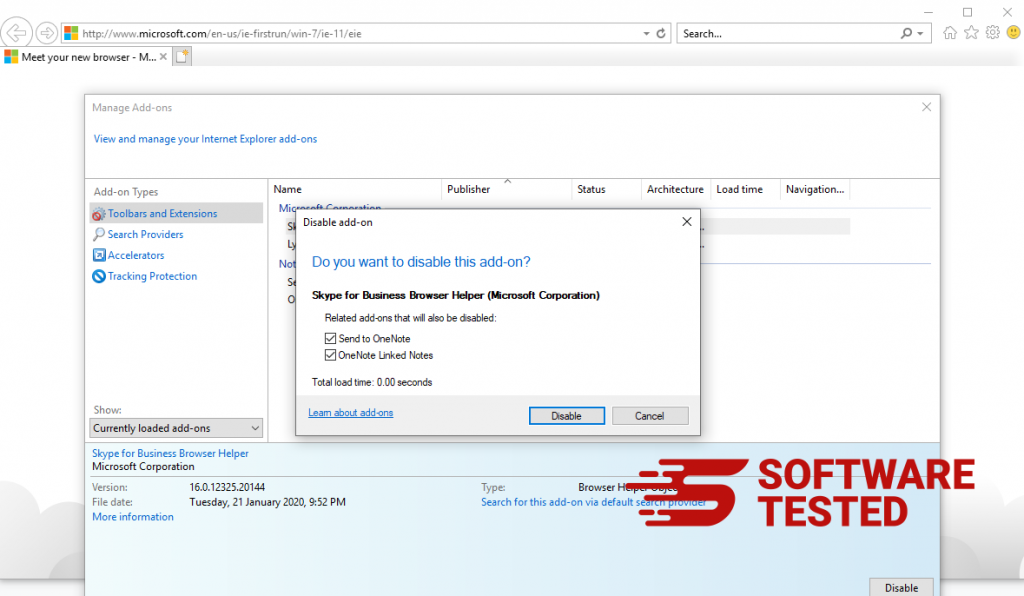
2. Reverse any changes to your homepage caused by the malware.
If you suddenly have a different start page or your default search engine has been changed, you can change it back through the Internet Explorer's settings. To do this, click on the gear icon at the upper-right corner of the browser, then choose Internet Options.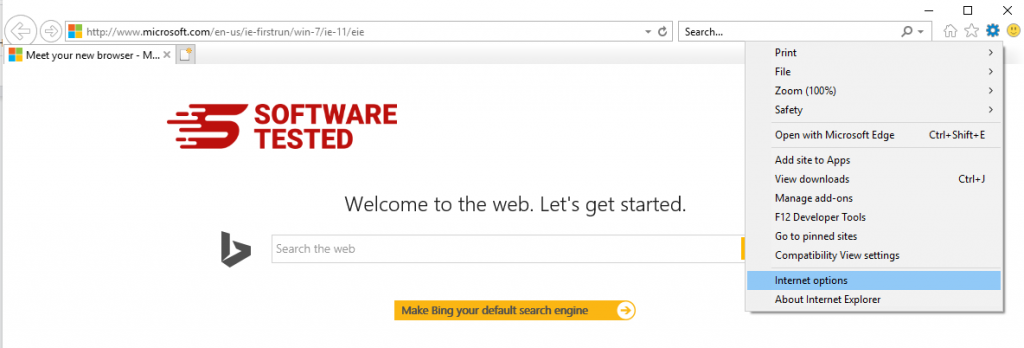
Under the General tab, delete the homepage URL and enter your preferred homepage. Click Apply to save the new settings.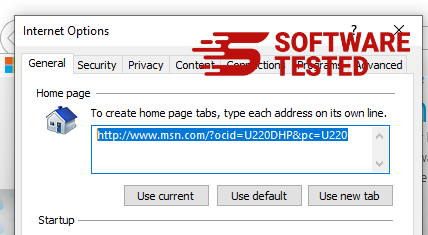
3. Reset Internet Explorer.
From the Internet Explorer menu (gear icon at the top), choose Internet Options. Click on the Advanced tab, then select Reset.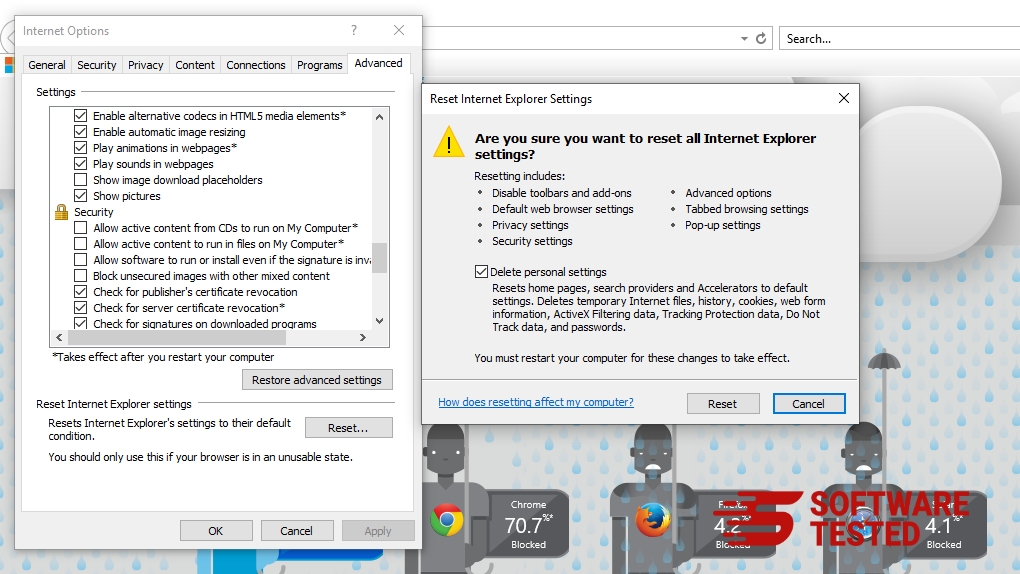
In the Reset window, tick off Delete personal settings and click the Reset button once again to confirm the action.
How to Uninstall Conhost.exe on Microsoft Edge
If you suspect your computer to have been infected by malware and you think that your Microsoft Edge browser has been affected, the best thing to do is to reset your browser.
There are two ways to reset your Microsoft Edge settings to completely remove all the traces of malware on your computer. Refer to the instructions below for more information.
Method 1: Resetting via Edge Settings
- Open the Microsoft Edge app and click More or the three-dot menu located at the upper-right corner of the screen.
- Click Settings to reveal more options.

- In the Settings window, click Restore settings to their default values under Reset settings. Click the Reset button to confirm. This action will reset your browser’s startup page, the new tab page, default search engine, and pinned tabs. Your extensions will also be disabled and all temporary data like cookies will be deleted.

- Afterwards, right-click on the Start menu or the Windows logo, then select Task Manager.
- Click on the Processes tab and search for Microsoft Edge.

- Right-click on the Microsoft Edge process and select Go to details. If you don't see the Go to details option, click More details instead.

- Under the Details tab, look for all the entries with Microsoft Edge in their name. Right-click on each of these entries and choose End Task to quit those processes.

- Once you have quit all those processes, open Microsoft Edge once again and you'll notice that all the previous settings have been reset.
Method 2: Resetting via Command
Another way to reset Microsoft Edge is by using commands. This is an advanced method that is extremely useful if your Microsoft Edge app keeps crashing or won't open at all. Make sure to back up your important data before using this method.
Here are the steps to do this:
- Navigate to this folder on your computer: C:\Users\%username%\AppData\Local\Packages\Microsoft.MicrosoftEdge_8wekyb3d8bbwe.

- Select everything inside the folder, right-click on the highlighted files, then click Delete from the options.

- Search for Windows PowerShell using the search box beside the Start menu.
- Right-click on the Windows PowerShell entry, then choose Run as administrator.

- In the Windows PowerShell window, type in this command:
Get-AppXPackage -AllUsers -Name Microsoft.MicrosoftEdge | Foreach {Add-AppxPackage -DisableDevelopmentMode -Register $($_.InstallLocation)\AppXManifest.xml -Verbose}
- Press Enter to execute the command.
- Once the reset process has been completed, Conhost.exe should be completely deleted from your Microsoft Edge browser.
How to Delete Conhost.exe from Mozilla Firefox
Just like other browsers, malware tries to change the settings of Mozilla Firefox. You need to undo these changes to remove all traces of Conhost.exe. Follow the steps below to completely delete Conhost.exe from Firefox:
1. Uninstall dangerous or unfamiliar extensions.
Check Firefox for any unfamiliar extensions that you don't remember installing. There is a huge chance that these extensions were installed by the malware. To do this, launch Mozilla Firefox, click on the menu icon at the top-right corner, then select Add-ons > Extensions.
In the Extensions window, choose Conhost.exe and other suspicious plugins. Click the three-dot menu beside the extension, then choose Remove to delete these extensions.
2. Change your homepage back to default if it was affected by malware.
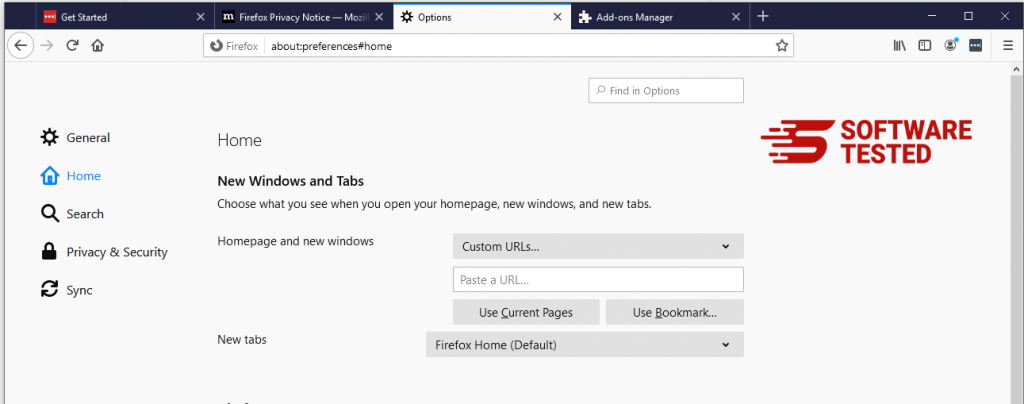
Click on the Firefox menu at the upper-right corner of the browser, then choose Options > General. Delete the malicious homepage and type in your preferred URL. Or you can click Restore to change to the default homepage. Click OK to save the new settings.
3. Reset Mozilla Firefox.
Go to the Firefox menu, then click on the question mark (Help). Choose Troubleshooting Information. Hit the Refresh Firefox button to give your browser a fresh start.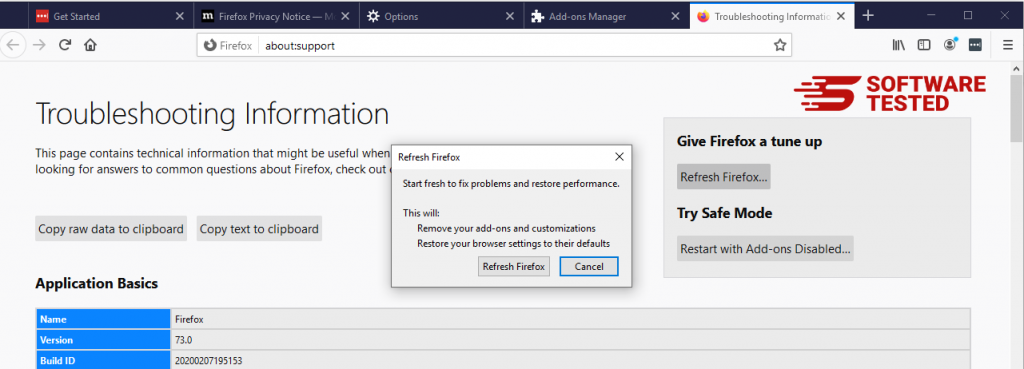
Once you’ve completed the steps above, Conhost.exe will be completely gone from your Mozilla Firefox browser.
How to Remove Conhost.exe from Google Chrome
To completely remove Conhost.exe from your computer, you need to reverse all of the changes on Google Chrome, uninstall suspicious extensions, plug-ins, and add-ons that were added without your permission.
Follow the instructions below to remove Conhost.exe from Google Chrome:
1. Delete malicious plugins.
Launch the Google Chrome app, then click on the menu icon at the upper-right corner. Choose More Tools > Extensions. Look for Conhost.exe and other malicious extensions. Highlight these extensions you want to uninstall, then click Remove to delete them.
2. Revert changes to your homepage and default search engine.
Click on Chrome's menu icon and select Settings. Click On Startup, then tick off Open a specific page or set of pages. You can either set up a new page or use existing pages as your homepage.
Go back to Google Chrome's menu icon and choose Settings > Search engine, then click Manage search engines. You'll see a list of default search engines that are available for Chrome. Delete any search engine that you think is suspicious. Click the three-dot menu beside the search engine and click Remove from list.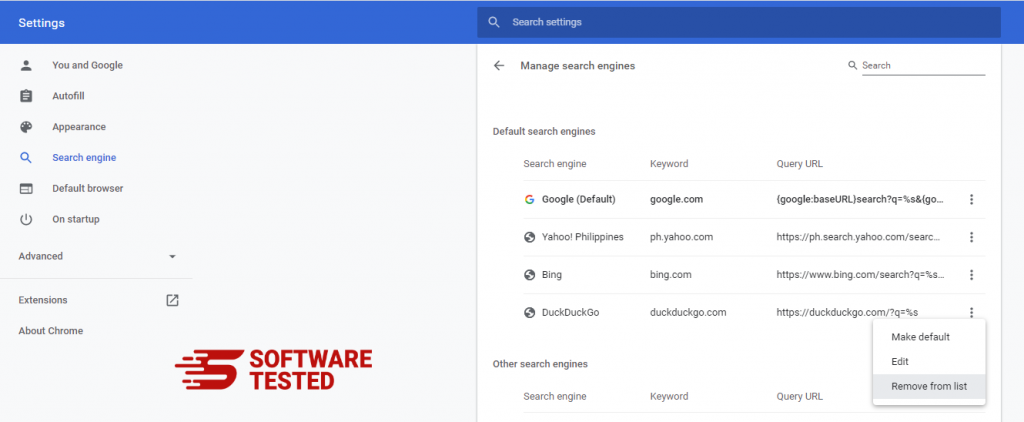
3. Reset Google Chrome.
Click on the menu icon located at the top right of your browser, and choose Settings. Scroll down to the bottom of the page, then click on Restore settings to their original defaults under Reset and clean up. Click on the Reset Settings button to confirm the action.
This step will reset your startup page, new tab, search engines, pinned tabs, and extensions. However, your bookmarks, browser history, and saved passwords will be saved.
How to Get Rid of Conhost.exe from Safari
The computer’s browser is one of the major targets of malware — changing settings, adding new extensions, and changing the default search engine. So if you suspect your Safari to be infected with Conhost.exe, these are the steps you can take:
1. Delete suspicious extensions
Launch the Safari web browser and click on Safari from the top menu. Click Preferences from the drop-down menu.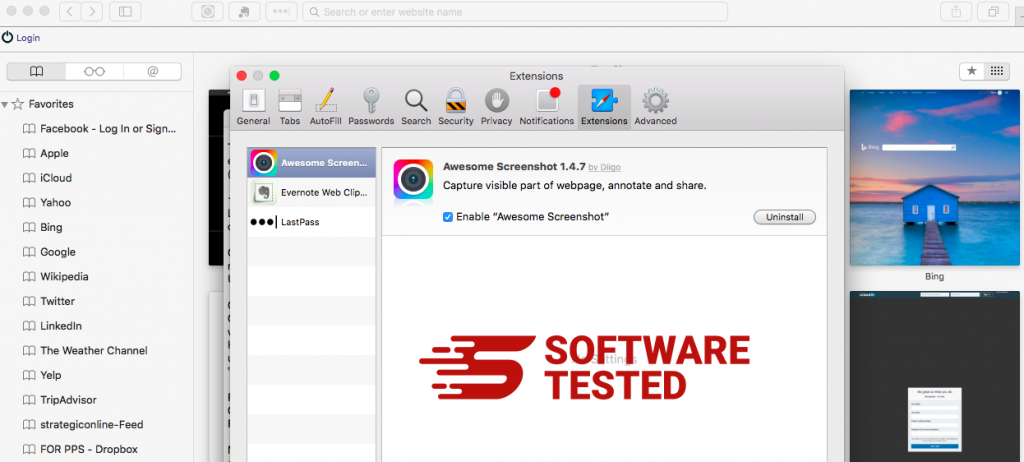
Click on the Extensions tab at the top, then view the list of currently installed extensions on the left menu. Look for Conhost.exe or other extensions you don’t remember installing. Click the Uninstall button to remove the extension. Do this for all your suspected malicious extensions.
2. Revert changes to your homepage
Open Safari, then click Safari > Preferences. Click on General. Check out the Homepage field and see if this has been edited. If your homepage was changed by Conhost.exe, delete the URL and type in the homepage you want to use. Make sure to include the http:// before the address of the webpage.
3. Reset Safari
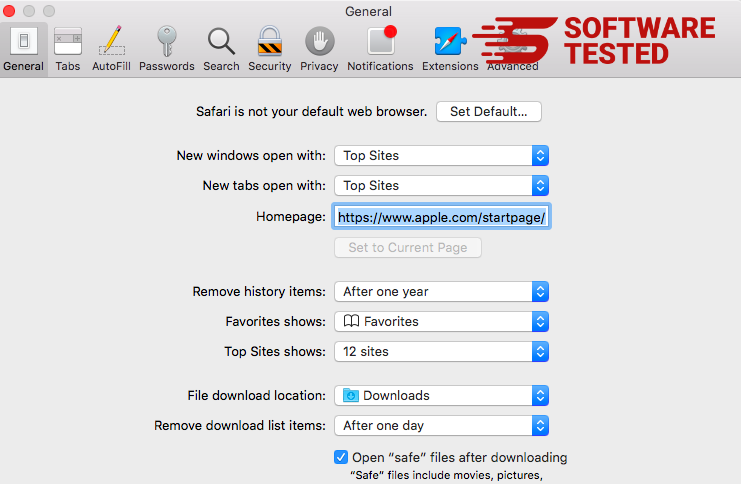
Open the Safari app and click on Safari from the menu at the upper-left of the screen. Click on Reset Safari. A dialog window will open where you can choose which elements you want to reset. Next, click the Reset button to complete the action.

